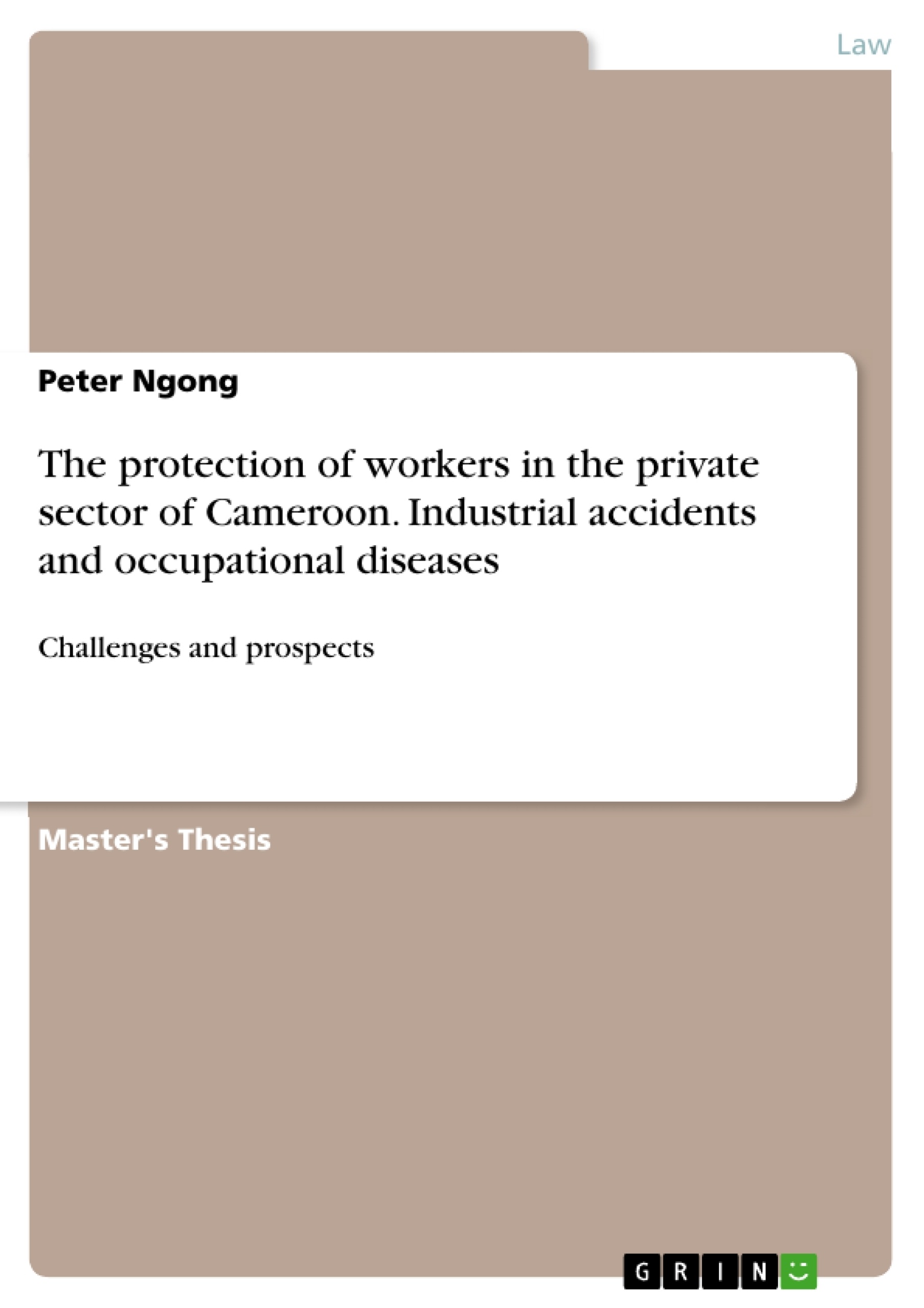The protection of workers from work-related accidents and diseases is a socio-economic right recognized and preserved by a variety of international and national human rights and industrial law instruments. The work exams the nature of work-related hazards from both the statutory and common law perspectives. In this vein, it critically examines the concepts of industrial accidents, occupational diseases, and personal injury for the purpose of protection.
It is argued that damning consequences are bound to be felt by the worker and his dependents, the employer and the society at large, if workers are not protected from the risk of accidents and diseases inherent in their jobs. The research also discussed the common law defenses used by employers to escape liability towards injured workers; vital amongst which is the defense of volunti non fit injuria.
The research there calls for the non-applicability of the said doctrine/defense within the employer/employee relationship. The research further examines the statutory and on law remedies available to worker who get injured or contract a disease while at work.
Inhaltsverzeichnis (Table of Contents)
- CHAPTER ONE
- GENERAL INTRODUCTION
- 1.0 Introduction
- 1.1. Research Problem
- 1.2. Research Questions
- 1.3. Objectives
- 1.4. Research Methodology
- 1.5. Literature Review
- 1.6. Theoretical and Conceptual Framework
- 1.7. Significance of the Research
- 1.8. Justification of the Research
- 1.9. Area/Scope of Study
- 1.10. Limitations
- 1.11. Conceptual Definition of Key Terms
- CHAPTER TWO
- THE NATURE AND CONSEQUENCES OF WORKERS' PROTECTION FROM WORK-RELATED ACCIDENTS AND DISEASES
- Legal framework for worker protection in Cameroon's private sector
- Analysis of work-related hazards and their consequences
- Examination of legal remedies available to injured workers
- Discussion of employer defenses against liability
- Evaluation of the effectiveness of existing worker protection measures
Zielsetzung und Themenschwerpunkte (Objectives and Key Themes)
This research examines the legal framework for protecting workers in the private sector of Cameroon from industrial accidents and occupational diseases. It analyzes the legal remedies available to workers who suffer injuries or contract diseases at work, focusing on both statutory and common law approaches. The research also explores the common law defenses raised by employers to escape liability, particularly the defense of voluntary assumption of risk.
Zusammenfassung der Kapitel (Chapter Summaries)
Chapter One: General Introduction
This introductory chapter sets the stage for the research by defining the problem, research questions, objectives, methodology, and theoretical framework. It also delves into the significance, justification, scope, limitations, and conceptual definitions of key terms.
Chapter Two: The Nature and Consequences of Workers' Protection from Work-Related Accidents and Diseases
This chapter explores the nature of work-related hazards and their consequences for workers, employers, and society at large. It examines the concepts of industrial accidents, occupational diseases, and personal injury, highlighting the need for robust worker protection measures.
Schlüsselwörter (Keywords)
The research focuses on the critical areas of worker protection, industrial accidents, occupational diseases, legal remedies, employer liability, and the effectiveness of existing legislation in Cameroon. It aims to provide a comprehensive analysis of the legal landscape surrounding worker protection in the private sector.
- Quote paper
- Peter Ngong (Author), 2015, The protection of workers in the private sector of Cameroon. Industrial accidents and occupational diseases, Munich, GRIN Verlag, https://www.grin.com/document/1334013



